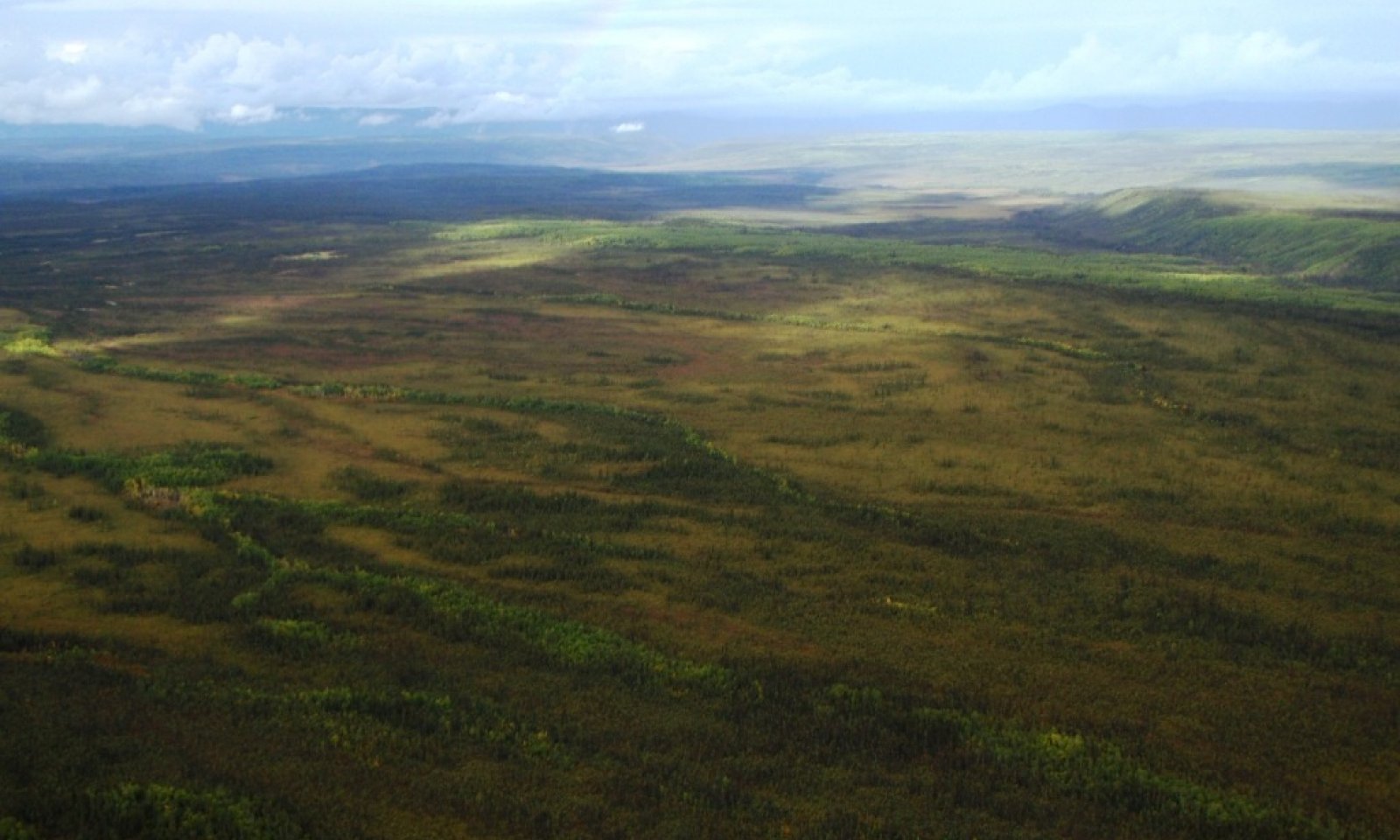
Boreal Woodland Loamy Frozen Plain Wet
Circle-spoke model
Scenario model
Current ecosystem state
Select a state
Management practices/drivers
Select a transition or restoration pathway
-
No transition or restoration pathway between the selected states has been described
Target ecosystem state
Select a state
Description
The reference state has two associated communities. The phases are grouped by the structure and dominance of the vegetation (e.g., coniferous trees, deciduous trees, shrubs, and forbs) and their ecological function and stability. Plant communities in the reference state appear to be largely controlled by the influences of fire.
Fire may be an integral part of maintaining reference state vegetation. In the absence of fire, organic material accumulates and that increase facilitates tree, shrub, and moss invasion of tussocks (Viereck et al. 1992). The increase of non-graminoid cover is thought to lead to the senesce and death of tussocks (Viereck et al. 1992). Fire events remove non-graminoid cover, this disturbance provides nutrients for tussocks, and tussocks become more productive (Viereck et al. 1992).
This report provides baseline vegetation inventory data for the ecological site. More data collection is needed to provide further information about existing plant communities and the disturbance regimes that would result in transitions from one community to another. The common and scientific plant names are from the USDA PLANTS database. All plant communities in this report are characterized using the Alaska Vegetation Classification (Viereck et al. 1992).
Submodel
Model keys
Briefcase
Add ecological sites and Major Land Resource Areas to your briefcase by clicking on the briefcase (![]() ) icon wherever it occurs. Drag and drop items to reorder. Cookies are used to store briefcase items between browsing sessions. Because of this, the number of items that can be added to your briefcase is limited, and briefcase items added on one device and browser cannot be accessed from another device or browser. Users who do not wish to place cookies on their devices should not use the briefcase tool. Briefcase cookies serve no other purpose than described here and are deleted whenever browsing history is cleared.
) icon wherever it occurs. Drag and drop items to reorder. Cookies are used to store briefcase items between browsing sessions. Because of this, the number of items that can be added to your briefcase is limited, and briefcase items added on one device and browser cannot be accessed from another device or browser. Users who do not wish to place cookies on their devices should not use the briefcase tool. Briefcase cookies serve no other purpose than described here and are deleted whenever browsing history is cleared.
Ecological sites
Major Land Resource Areas
The Ecosystem Dynamics Interpretive Tool is an information system framework developed by the USDA-ARS Jornada Experimental Range, USDA Natural Resources Conservation Service, and New Mexico State University.
